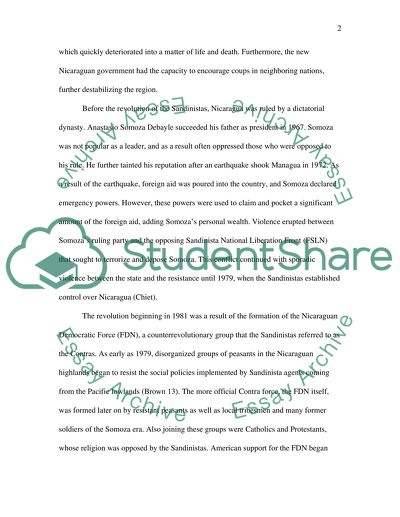Cite this document
(“Nicaraguan War: Sandinistas Vs. Contras (1981-1990) Research Paper”, n.d.)
Retrieved from https://studentshare.org/family-consumer-science/1417386-1981-1990-nicaraguan-war-sandinistas-vs-contras
Retrieved from https://studentshare.org/family-consumer-science/1417386-1981-1990-nicaraguan-war-sandinistas-vs-contras
(Nicaraguan War: Sandinistas Vs. Contras (1981-1990) Research Paper)
https://studentshare.org/family-consumer-science/1417386-1981-1990-nicaraguan-war-sandinistas-vs-contras.
https://studentshare.org/family-consumer-science/1417386-1981-1990-nicaraguan-war-sandinistas-vs-contras.
“Nicaraguan War: Sandinistas Vs. Contras (1981-1990) Research Paper”, n.d. https://studentshare.org/family-consumer-science/1417386-1981-1990-nicaraguan-war-sandinistas-vs-contras.


